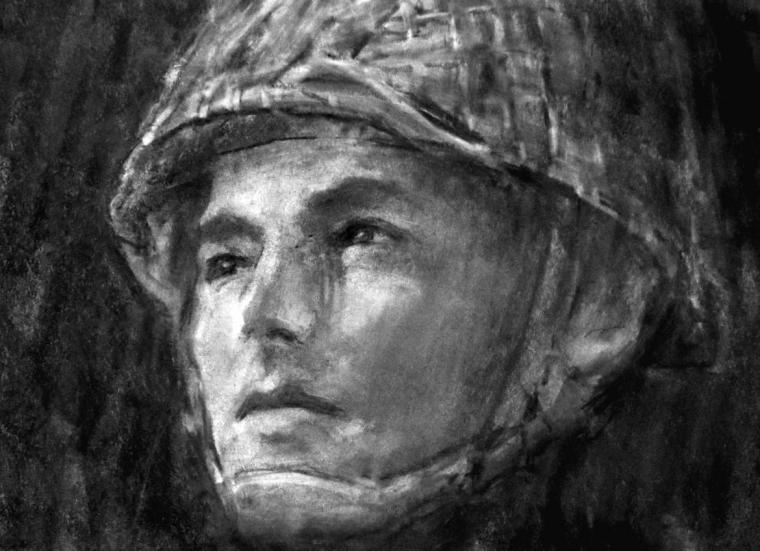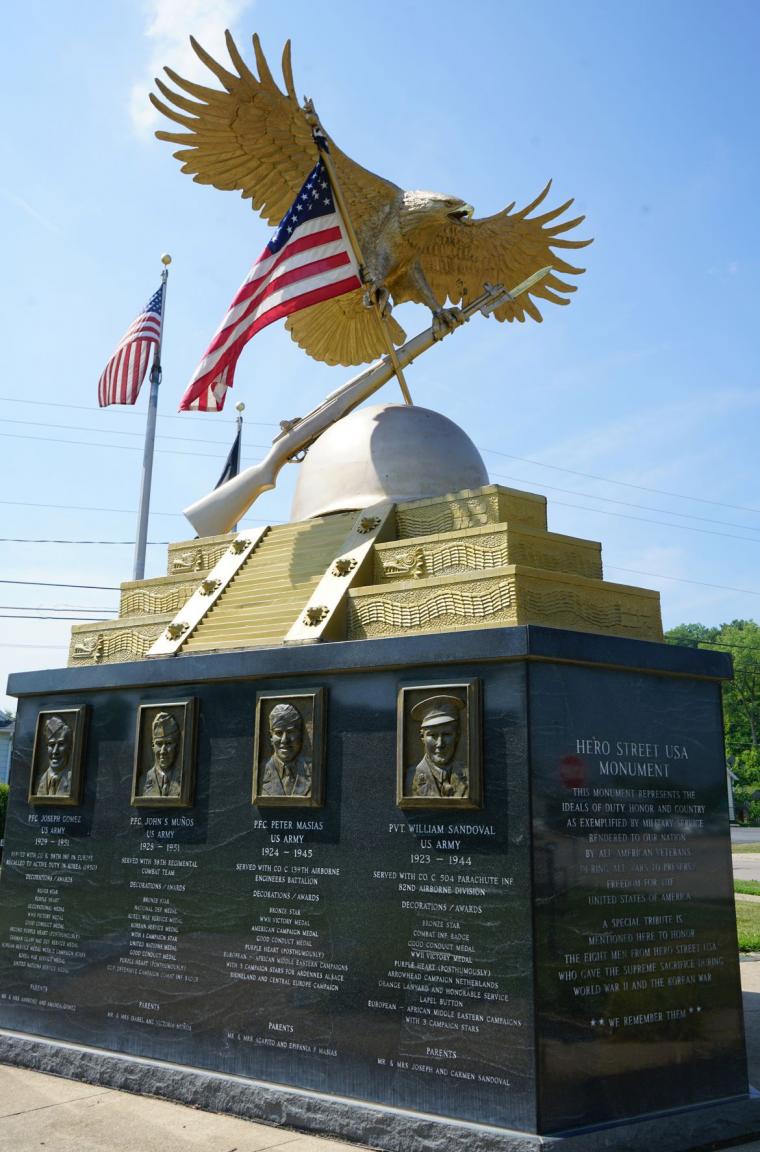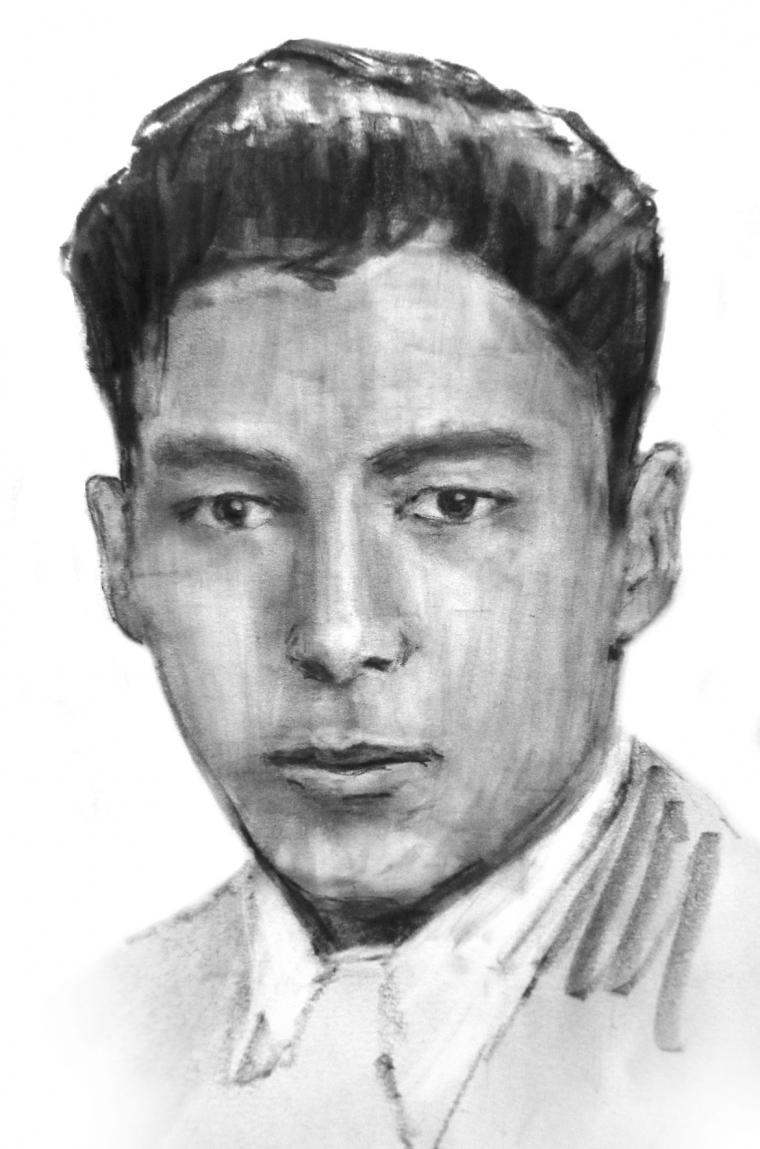
William Louis Sandoval drawing in "A Bridge Too Far from Hero Street" by Bruce Walters
William “Willie” Louis Sandoval was struck down by a machine gunner near the end of the Second World War. His death came after having served 151 days on the front line in Italy; after parachuting behind Nazi lines in Northern Europe. He was just 21 years old.
Willie was the son of Mexican immigrants. His family brought him to Silvis, Illinois in 1925, when he was two years old. The family first lived in railroad box cars, uninsulated against the brutal cold of winter and heat of summer. In 1937, they moved to a block designated by the city for the immigrant workers and their families. The street was without sewage, running water, and electricity. His mother died after giving birth to twin boys when Willie was 13. Both twins also died within hours.
Within a year of his graduation from East Moline High School, Willie enlisted in the Army. He was assigned to Company F, Second Battalion, 504th Parachute Infantry Regiment, 82nd Airborne Division.
He was first deployed in Italy, parachuting into the Salerno region to reinforce the Allied beachhead during Operation Avalanche. Advancing towards Rome, his regiment helped to liberate Naples. On January 22, 1944, his unit made an amphibious landing in Anzio, where they would fight for eight weeks. When they fought in San Pietro, a third of his unit were killed in battle or by disease.

On September 17, the 504th took part in Operation Market Garden, a massive Allied operation intended to create an invasion route into Germany. Willie’s regiment crossed the 400-yard Waal River completely exposed to German fire in collapsible wood-and-canvas boats. Nearly half of the unit suffered casualties, yet his battalion succeeded in seizing the river's strategic bridge that crossed over the river. The entire operation, however, failed when the next bridge at Arnhem was not seized. The operation would be the basis for the book and film A Bridge Too Far.
Willie’s father received a telegram informing him that his son was missing in action as of October 6, 1944. One year and a day later, his family was notified that he was killed in action during an attack near Zyfflich, Germany.
His body was never recovered.
William L. Sandoval earned the Bronze Star, Combat Infantry Badge, Good Conduct Medal, WWII Victory Medal, Purple Heart (posthumously), Arrowhead Campaign Netherlands, Orange Lanyard, and Honorable Service Lapel Button – European-African-Middle Eastern Campaign with three campaign stars.
A generation after Willie’s death, the street where he lived was renamed Hero Street. Twenty-two families who lived on that street sent 57 of their children to fight. Eight died.
A monument for these eight young men, including Willie, was conceived by childhood friend Sonny Soliz. As the artist and teacher told me in an interview, the monument came to him in a dream and was built exactly it appeared to him. It was dedicated in 2007.

The 17-foot-tall monument is located at the corner of First Avenue and Hero Street in Silvis. An inscription prominently placed on its base begins with the words “This monument represents the ideals of duty, honor and country as exemplified by military service.” The base also has sculptural reliefs of eight men who “gave the supreme sacrifice during World War II and the Korean War.”
Willie is also memorialized in the Rock Island National Cemetery (section MA site 36) and on the Sea Tablets of the Missing at Netherlands American Cemetery Margraten, Netherlands.
As Willie's brother Al was quoted in Fourth Wall Films' A Bridge Too Far from Hero Street: “The country never gave him much as a kid, but he gave his country everything. I think he would be proud of how we all turned out. America is worth fight for, dying for. I think my brother would have agreed.”
Bruce Walters is a Professor Emeritus in Art conferred by Western Illinois University.
This is part of an occasional series on famous (or infamous) people buried in cemeteries in the Quad Cities, and their history that is not so well-known today. If there’s a piece of history buried here that you’d like to learn more about, e-mail the location and a brief description to BD-Walters@wiu.edu.








